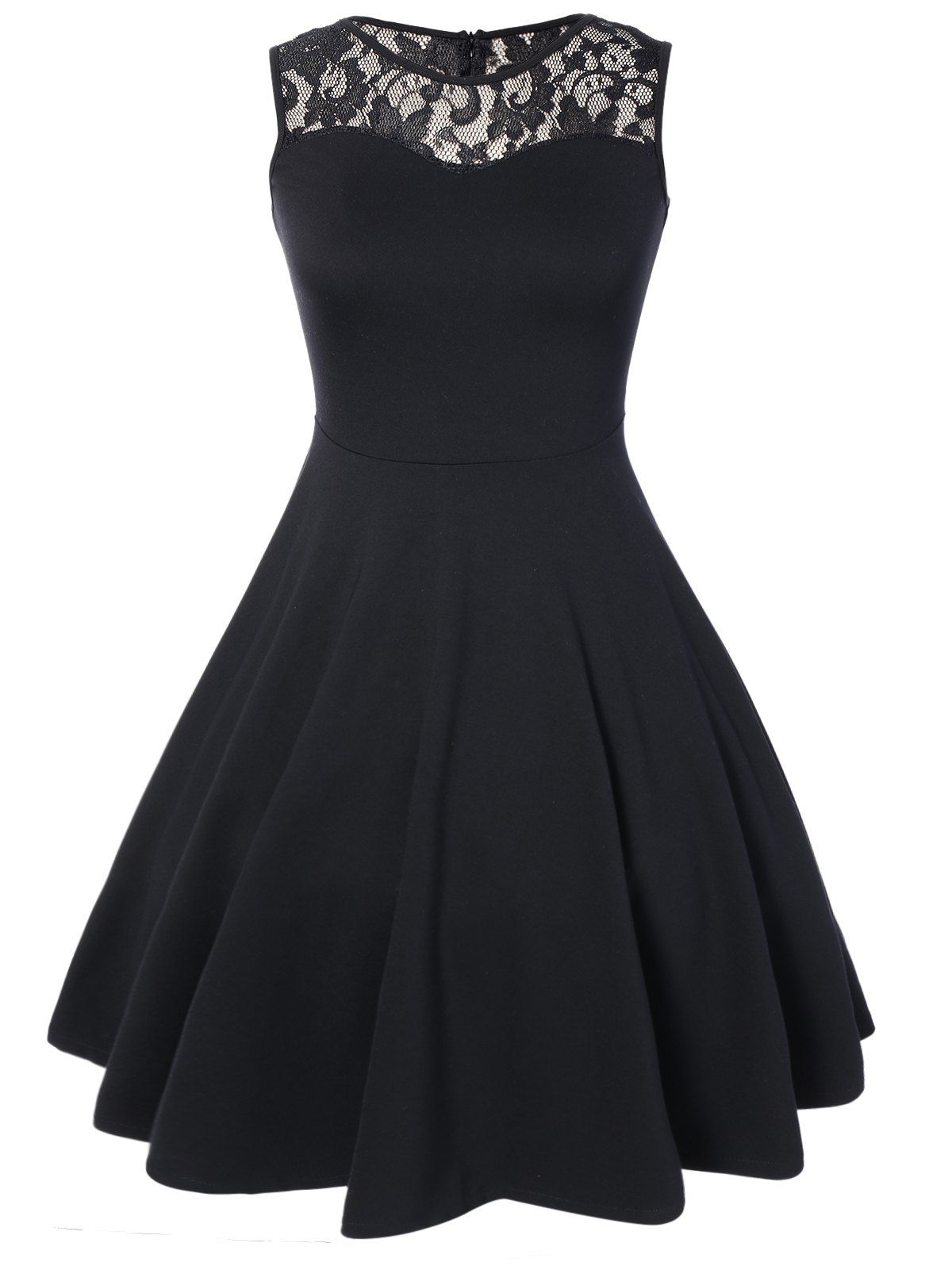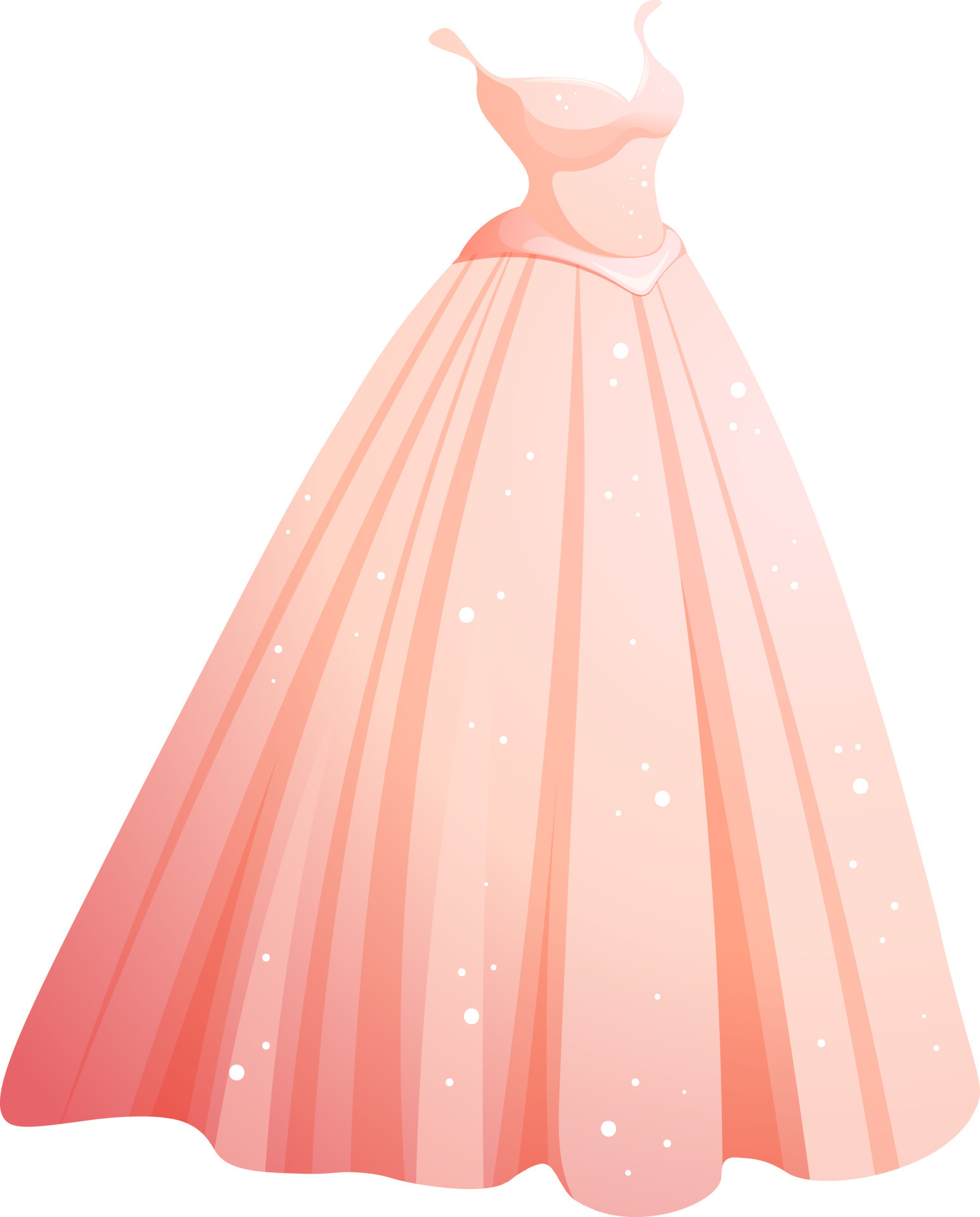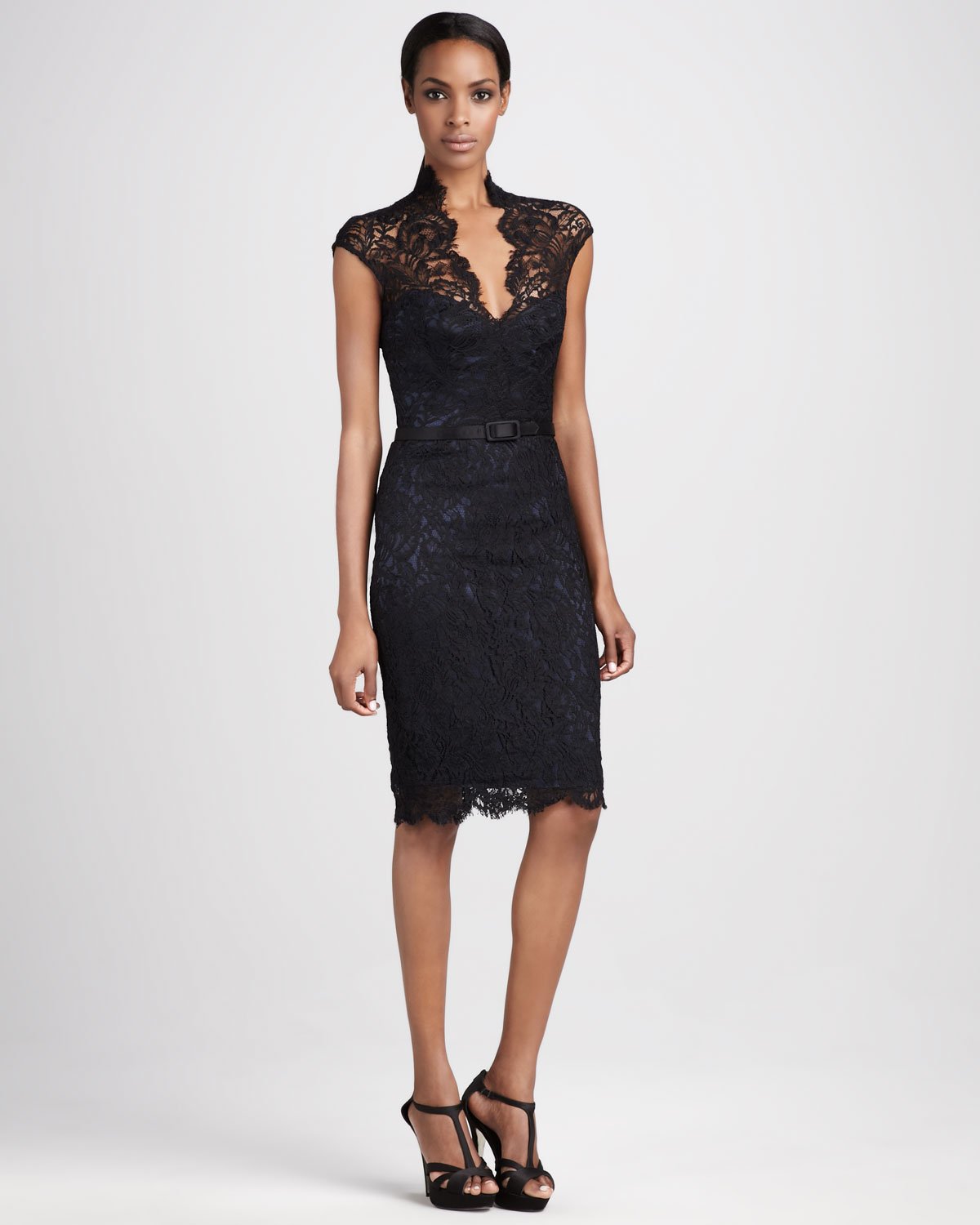The Dress Phenomenon: A Deep Dive Into The Viral Sensation That Split The Internet
Remember that one day in 2015 when the entire internet seemed to explode over a single photo? Yeah, we're talking about THE DRESS. It wasn’t just any dress—it was a viral sensation that made people question their own eyes and sanity. The debate was simple yet mind-blowing: was the dress blue and black or white and gold? And trust us, it got heated. People were picking sides like it was the final episode of their favorite show. So, what exactly happened, and why did this seemingly simple photo become such a massive cultural moment?
This wasn’t just another viral meme or passing trend. The dress phenomenon sparked conversations about perception, color science, and even psychology. It was like the internet had suddenly become a massive psychology experiment, and everyone was a participant whether they liked it or not. From celebrities to scientists, everyone had something to say about it.
Even now, years later, the dress still pops up in conversations about how our brains process visual information. So, let’s dive into why this simple photo became such a big deal, what it taught us about human perception, and how it continues to influence how we think about color and vision today. Buckle up, because this is gonna be a wild ride!
- Olivia Rodrigo The Rising Star Whos Taking The World By Storm
- Guardians Of The Galaxy 4 The Ultimate Space Adventure Youve Been Waiting For
Here’s a quick guide to what we’ll cover:
- The Origins of The Dress Debate
- The Science Behind the Color Illusion
- The Psychological Impact of The Dress
- How The Dress Influenced Pop Culture
- The Dress in Fashion and Media
- The Role of Technology in The Dress Phenomenon
- Different Versions of The Dress
- Conspiracy Theories Around The Dress
- The Legacy of The Dress
- What The Future Holds for Color Perception Studies
The Origins of The Dress Debate
It all started innocently enough. In February 2015, a picture of a striped dress was posted on Tumblr by a user named Caitlin McNeill. She had taken the photo at a wedding in Scotland, and her friends couldn’t agree on its color. What seemed like a harmless question—“What color is this dress?”—quickly spiraled into a global debate. Within hours, the image went viral, sparking arguments among friends, family, and strangers alike.
Some people saw the dress as blue and black, while others swore it was white and gold. And here’s the kicker: there was no definitive answer. The dress manufacturer eventually confirmed that the actual colors were blue and black, but by then, the damage was done. People were hooked, and the debate raged on.
- Synastry Chart Unlocking The Secrets Of Cosmic Compatibility
- Lisa Thorner The Rising Star Whos Capturing Hearts Worldwide
This wasn’t just about the dress itself; it was about how our brains interpret visual information. The phenomenon raised questions about how different lighting conditions and screen calibrations could affect how we perceive colors. And let’s be real, it also gave everyone an excuse to argue passionately about something trivial yet fascinating.
How Did It Spread So Quickly?
Social media played a huge role in amplifying the debate. Platforms like Twitter, Facebook, and Instagram were flooded with posts about the dress. Celebrities like Taylor Swift, Kim Kardashian, and even President Barack Obama weighed in, further fueling the fire. The media coverage was massive, with news outlets around the world dedicating entire segments to discussing the phenomenon.
And let’s not forget the memes. Oh, the memes. From photoshopped versions of the dress to parodies and jokes, the internet had a field day. It was like the perfect storm of viral content—a mix of curiosity, controversy, and creativity.
The Science Behind the Color Illusion
So, why did people see the dress differently? Turns out, it has everything to do with how our brains process light and color. According to scientists, the phenomenon is related to something called “color constancy.” This is the brain’s ability to recognize the color of an object under different lighting conditions.
When we look at an object, our brains try to compensate for the lighting around it. For example, if you’re in a room with yellow lighting, your brain might adjust what you see to account for the warmth of the light. In the case of the dress, the lighting in the photo was ambiguous, which caused different people’s brains to interpret the colors differently.
Some people’s brains assumed the dress was in shadow, making them see it as white and gold. Others assumed it was under normal lighting, leading them to see it as blue and black. It’s like a game of perception roulette, where your brain’s assumptions determine what you see.
What Does This Mean for Color Perception?
The dress phenomenon highlighted just how subjective color perception can be. It showed that two people can look at the exact same image and see completely different things. This has implications not just for fashion, but for fields like design, photography, and even psychology.
For example, if you’re designing a website or creating marketing materials, you need to consider how different people might perceive colors. What looks vibrant and eye-catching to one person might appear dull or washed out to another. It’s a reminder that perception is personal, and we can’t assume everyone sees the world the same way we do.
The Psychological Impact of The Dress
But the dress wasn’t just about science; it also had a profound psychological impact. The debate tapped into something deeply human: our need to make sense of the world around us. When we encounter something that challenges our understanding, it can be unsettling. And let’s face it, nothing unsettles us more than questioning our own senses.
For many people, the dress debate was a wake-up call. It made us realize that our perceptions aren’t always reliable. It also highlighted the power of social proof. If enough people around you see the dress as white and gold, you might start to doubt your own eyes, even if you’re convinced it’s blue and black.
Psychologists have studied the phenomenon extensively, exploring how it relates to cognitive biases, groupthink, and the influence of social media on our decision-making processes. It’s a fascinating example of how technology and psychology intersect in the digital age.
Why Did It Get So Emotional?
Part of the reason the debate got so heated was because it tapped into our emotional responses. When we’re passionate about something, we tend to get defensive if someone challenges our beliefs. In this case, people were defending not just their opinion, but their very perception of reality. It’s like arguing over whether the sky is blue—it’s personal.
And let’s be honest, the internet loves a good argument. The more polarizing a topic is, the more attention it gets. The dress debate was the perfect storm of curiosity, confusion, and controversy, and it played right into our need to connect with others through shared experiences.
How The Dress Influenced Pop Culture
The dress didn’t just stay on the internet; it spilled over into pop culture in a big way. From TV shows to movies, comedians to musicians, everyone wanted a piece of the action. The phenomenon even inspired a line of merchandise, including t-shirts, mugs, and, of course, actual dresses.
It also became a symbol of internet culture, representing how quickly and unpredictably trends can spread. The dress debate showed us that anything can go viral, no matter how seemingly trivial it might seem. It’s a reminder that in the age of social media, nothing is too small to become a global sensation.
And let’s not forget the memes. They were everywhere, from parody videos to photoshopped images. It’s like the internet collectively decided to have fun with the whole thing, turning a serious scientific phenomenon into a playful cultural moment.
Did It Change How We Think About Viral Content?
Absolutely. The dress phenomenon set a new standard for viral content. It showed that the key to going viral isn’t just about creating something funny or relatable; it’s about tapping into something deeper. Whether it’s curiosity, controversy, or connection, the most successful viral content resonates with people on an emotional level.
For marketers and content creators, this was a valuable lesson. It taught us that the best way to capture people’s attention is to give them something to talk about. And if you can make them question their own reality along the way, even better.
The Dress in Fashion and Media
Of course, the dress also had a significant impact on the fashion industry. It sparked conversations about how designers use color and lighting in their work. Some brands even capitalized on the phenomenon, releasing their own versions of the dress in both blue/black and white/gold.
Magazines and fashion blogs weighed in, offering their take on the debate and exploring how color perception affects the way we see clothing. It was like the entire fashion world was suddenly talking about science, which is pretty cool if you think about it.
And let’s not forget the media coverage. From news outlets to entertainment magazines, everyone had something to say about the dress. It was a rare moment when fashion, science, and pop culture collided in such a big way.
What Did Designers Think?
Designers were fascinated by the phenomenon, seeing it as a unique opportunity to explore how color and lighting affect the way we perceive fashion. Some even incorporated the dress’s colors into their collections, paying homage to the viral sensation that started it all.
It also raised questions about how designers can ensure their creations are seen as intended. With so many variables affecting how colors appear on different screens and in different lighting conditions, it’s a challenge that continues to influence the fashion industry today.
The Role of Technology in The Dress Phenomenon
Technology played a crucial role in the dress phenomenon, from the way the photo was shared to how people interacted with it. Social media platforms made it easy for the image to spread, while smartphones and tablets allowed people to view it on a variety of devices.
But it wasn’t just about sharing; it was about engagement. People were using technology to explore the phenomenon, from running experiments on their own devices to creating memes and parodies. It was like the internet was alive, actively participating in the debate rather than just passively consuming it.
And let’s not forget the role of algorithms. Social media platforms use algorithms to decide which content gets shown to users, and the dress debate was the perfect example of how viral content can dominate feeds. It’s a reminder that technology isn’t just a tool; it’s a powerful force shaping how we interact with the world.
What Does This Mean for the Future?
The dress phenomenon showed us just how powerful technology can be in shaping cultural moments. As technology continues to evolve, we can expect more moments like this, where seemingly simple things become global sensations. It’s a reminder that in the digital age, anything can go viral, and everything has the potential to spark a conversation.
Different Versions of The Dress
Over the years, there have been several variations of the dress phenomenon. From photoshopped versions to different lighting conditions, people have experimented with the image in countless ways. Some have even created their own versions of the dress, using different patterns and colors to test how people perceive them.
It’s a testament to the enduring fascination with the phenomenon. Even now, years later, people are still exploring the science and psychology behind it. It’s like the dress debate never really ended; it just evolved into something bigger and more complex.
Why Do People Keep Coming Back to It?
Because it’s fun! There’s something inherently enjoyable about testing your perception and seeing how others perceive the same thing. It’s like a game, but one that also teaches you something about how your brain works. And let’s face it, who doesn’t love a good mystery?
Conspiracy Theories Around The Dress
Of course, no viral phenomenon would be complete without conspiracy theories. Some people believe the dress was part of a massive psychological experiment, while others think it was created by a secret organization to test our perception. And then there are those who think it’s all just a big prank.
While most of these theories are just for fun, they do highlight our collective fascination with the unknown. It’s like we can’t help but search for deeper meaning in everything, even something as simple as a photo of a dress.
Are Any of These Theories True?
Probably not. But that doesn’t mean they aren’t fun to think about. The beauty of the dress phenomenon is that it leaves room for interpretation. Whether you see it as a scientific experiment, a psychological study, or just a really cool meme, it’s all up to you.
The Legacy of The Dress
So, what’s the legacy of the dress? For starters, it’s a reminder of



Detail Author:
- Name : Donavon Hamill
- Username : stone.kuphal
- Email : smann@gmail.com
- Birthdate : 1980-08-10
- Address : 90375 Schinner Parkways Apt. 784 East Shanymouth, AK 39140
- Phone : 731-851-7396
- Company : Breitenberg-Durgan
- Job : Telemarketer
- Bio : Quia magnam fuga pariatur deleniti et nesciunt. Sed quisquam eveniet eum distinctio amet facilis. Tempore est ea qui quae. Nobis esse cupiditate maxime quod velit.
Socials
tiktok:
- url : https://tiktok.com/@nico_hill
- username : nico_hill
- bio : Laborum labore perferendis officia architecto blanditiis minima.
- followers : 1757
- following : 1739
facebook:
- url : https://facebook.com/hill1970
- username : hill1970
- bio : Consequatur quo veritatis odio optio rem ducimus.
- followers : 4244
- following : 1649
linkedin:
- url : https://linkedin.com/in/nico_hill
- username : nico_hill
- bio : Molestias tenetur magni vero soluta.
- followers : 547
- following : 2522
twitter:
- url : https://twitter.com/hilln
- username : hilln
- bio : Repellendus enim voluptatem fuga debitis maiores. Laudantium ullam nulla dolore sed consectetur.
- followers : 5470
- following : 2014